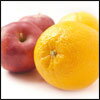|
Favorite Links | Secrets of Life | Poisonous Plants | The Best Goodbye
|
|
|
Make Your Pet's Home Poison Safe: List of Toxic Plants
Please note that the information contained in our plant lists is not meant to be all-inclusive, but rather a compilation of the most frequently encountered plants. For general information on plants not included on either list, please feel free to contact us at napcc@aspca.org.
|
|
Alphabetical Listing by Common Name
|
|
Some plants can poison pups
Keep this greenery out of your house and yard.
By Arden Moore
For the past eight years, Jill Richardson, DVM, has been the voice of safety at the ASPCA Animal Poison Control Center in Urbana, Ill. She fielded calls from frantic owners worried that their dogs had eaten a toxic leaf, stem, or flower.
To protect her own dogs, Richardson made certain that poisonous plants never made their way into her Urbana home or her yard?s landscape. ?People are often surprised to learn that there are actually hundreds of plants potentially poisonous to dogs,? says Richardson, who recently left the ASPCA to become associate director of consumer relations for Hartz Mountain Corp. in Secaucus, N.J.
Richardson identifies the top 10 most common poisonous houseplants and landscape plants dog owners should avoid:
Autumn crocus (Colchicum): Its active ingredient, colchicines, triggers an anti-metabolic effect that can cause rapidly dividing cells, shedding of the gastrointestinal tract, bloody diarrhea, and vomiting.
Azalea (Rhododendron): This popular plant can harm a dog?s cardiovascular system and trigger vomiting or gastrointestinal upset.
Daffodil (Narcissus): Toxic ingredients in the bulbs cause convulsions, tremors, lethargy, weakness, and upset stomachs.
Hyacinth (Hyacinth): This popular plant can cause severe vomiting, bloody diarrhea, depression, and tremors.
Japanese yew (Taxis): Extremely toxic to dogs, this group of ornamental plants can cause seizures or cardiac failure. The plant and red berries are toxic.
Lily of the valley (Convalaria): This plant can cause heart failure, coordination problems, and vomiting.
Oleander (Nerium): Extremely toxic, this popular outdoor plant contains cardiac glycosides that harm the heart, decrease body temperature, cause abnormal pulse rate, and can cause death. Beware: Even people have died from eating hot dogs roasted on an oleander twig.
Rhubarb (Rheum): Although the stalks are used to make pies, the leaves pack the potential to cause kidney damage.
Sago palm (Cycads): Resembling an upside down pineapple, this plant thrives in sandy soils, especially in warmer states such as California, Texas, and Florida. A few seeds can kill a dog.
Tomato (Lycopersicion): Surprisingly, the greenery of this common plant, not the tomato itself, contains solanine, a toxic ingredient that can prompt gastric upset, depression, weakness, and a decrease in heart rate.
Richardson?s parting advice: Keep your dog away from any mushrooms. ?Always assume any ingested mushroom by a dog is toxic and will cause liver failure,? Richardson says. ?The problem is that many poisonous mushrooms often grow together with non-poisonous mushrooms.?
For more information on poisonous plants, tap into the ASPCA Animal Poison Control Center at www.apcc.aspca.org or the American Veterinary Medical Association website at www.avma.org/pubhlth/poisgde.asp.
Arden Moore is a DOG FANCY contributing editor and author of ?Dog Training: A Lifelong Guide? (Bowtie Press, 2002, $16.95). She lives in Oceanside, Calif.

STRANGE FRUIT: SEASONAL PRODUCE THAT CAN HARM YOUR PETS
Cherries and lemons and apples, oh my! While spring and summer fruits are good for you, certain parts of these seasonal offerings can be potentially irritating and in some situations, occasionally toxic to companion animals.
According to our experts at the ASPCA Animal Poison Control Center (APCC), the peels, fruit and seeds of citrus plants such as lemons, oranges, limes and grapefruits contain varying amounts of citric acid, limonin and volatile oils that can cause gastrointestinal irritation and result in vomiting and diarrhea. As for apples, cherries, peaches and apricots, their stems, leaves and seeds contain cyanogenic glycosides that have the potential to cause vomiting and loss of appetite and in severe cases, weakness, difficulty breathing, hyperventilation, shock and even death.
Typically, these severe effects develop from very large ingestions of plant material, more likely to occur with grazing animals such as horses or other livestock, says the APCC's Dana Farbman, CVT. The consumption of a few segments of citrus fruit, an apple or two, or a few cherries would usually not be expected to cause serious problems beyond perhaps minor stomach upset. However, it is important for animal owners to be aware of the potential for problems that these fruit trees can produce.
As a companion animal owner, it's always a good idea to become familiar with different types of plants in and around the home and make sure that potentially poisonous species are not accessible to your pets. For lists of both safe and potentially toxic plants, please visit ASPCA online.
KNOWN TOXIC FOODS FOR DOGS
|
Q.
|
Which foods could be dangerous for my dog?
|
|
A.
|
Some foods which are edible for humans, and even other species of animals, can pose hazards for dogs because of their different metabolism. Some may cause only mild digestive upsets, whereas, others can cause severe illness, and even death. The following common food items should not be fed (intentionally or unintentionally) to dogs. This list is, of course, incomplete because we can not possibly list everything your dog should not eat.
|
Items to avoid
|
Reasons to avoid
|
|
Alcoholic beverages
|
Can cause intoxication, coma, and death.
|
|
Baby food
|
Can contain onion powder, which can be toxic to dogs. (Please see onion below.) Can also result in nutritional deficiencies, if fed in large amounts.
|
|
Bones from fish, poultry, or other meat sources
|
Can cause obstruction or laceration of the digestive system.
|
|
Cat food
|
Generally too high in protein and fats.
|
|
Chocolate, coffee, tea, and other caffeine
|
Contain caffeine, theobromine, or theophylline, which can be toxic and affect the heart and nervous systems.
|
|
Citrus oil extracts
|
Can cause vomiting.
|
|
Fat trimmings
|
Can cause pancreatitis.
|
|
Grapes and raisins
|
Contain an unknown toxin, which can damage the kidneys.
|
|
Hops
|
Unknown compound causes panting, increased heart rate, elevated temperature, seizures, and death.
|
|
Human vitamin supplements containing iron
|
Can damage the lining of the digestive system and be toxic to the other organs including the liver and kidneys.
|
|
Large amounts of liver
|
Can cause Vitamin A toxicity, which affects muscles and bones.
|
|
Macadamia nuts
|
Contain an unknown toxin, which can affect the digestive and nervous systems and muscle.
|
|
Marijuana
|
Can depress the nervous system, cause vomiting, and changes in the heart rate.
|
|
Milk and other dairy products
|
Some adult dogs and cats do not have sufficient amounts of the enzyme lactase, which breaks down the lactose in milk. This can result in diarrhea. Lactose-free milk products are available for pets.
|
|
Moldy or spoiled food, garbage
|
Can contain multiple toxins causing vomiting and diarrhea and can also affect other organs.
|
|
Mushrooms
|
Can contain toxins, which may affect multiple systems in the body, cause shock, and result in death.
|
|
Onions and garlic (raw, cooked, or powder)
|
Contain sulfoxides and disulfides, which can damage red blood cells and cause anemia. Cats are more susceptible than dogs. Garlic is less toxic than onions.
|
|
Persimmons
|
Seeds can cause intestinal obstruction and enteritis.
|
|
Pits from peaches and plums
|
Can cause obstruction of the digestive tract.
|
|
Potato, rhubarb, and tomato leaves; potato and tomato stems
|
Contain oxalates, which can affect the digestive, nervous, and urinary systems. This is more of a problem in livestock.
|
|
Raw eggs
|
Contain an enzyme called avidin, which decreases the absorption of biotin (a B vitamin). This can lead to skin and hair coat problems. Raw eggs may also contain Salmonella.
|
|
Raw fish
|
Can result in a thiamine (a B vitamin) deficiency leading to loss of appetite, seizures, and in severe cases, death. More common if raw fish is fed regularly.
|
|
Salt
|
If eaten in large quantities it may lead to electrolyte imbalances.
|
|
String
|
Can become trapped in the digestive system; called a "string foreign body."
|
|
Sugary foods
|
Can lead to obesity, dental problems, and possibly diabetes mellitus.
|
|
Table scraps (in large amounts)
|
Table scraps are not nutritionally balanced. They should never be more than 10% of the diet. Fat should be trimmed from meat; bones should not be fed.
|
|
Tobacco
|
Contains nicotine, which affects the digestive and nervous systems. Can result in rapid heart beat, collapse, coma, and death.
|
|
Yeast dough
|
Can expand and produce gas in the digestive system, causing pain and possible rupture of the stomach or intestines.
|
|
List obtained from Dr.Foster and Smith's Website.
Toxic Plants to Animals
There are many common foods, plants and flowers that can be very toxic to your dog.
Below you'll find a list of the most common types:
Alcohol (all beverages, ethanol, methanol, isopropyl), Almonds*, Amarylis bulb*,Apricot*, Autumn crocus ( Colchicum autumnale)* ,Avocado (leaves, seeds, stem, skin)*, Azalea (entire rhododendron family), Begonia*, Bird of Paradise, Bittersweet, Bleeding heart*, Boxwood, Bracken fern, Buckeye, Buttercup (Ranunculus), Caffeine, Caladium*, Calla lily*, Castor bean* (can be fatal if chewed), Cherry, Chinese sacred or heavenly bamboo*, Chocolate, Choke cherry (unripe berries)*, Chrysanthemum (a natural source of pyrethrins), Clematis, Crocus bulb, Croton (Codiaeum sp.), Cyclamen bulb, Delphenium, larkspur, monkshood*, Dumb cane (Dieffenbachia)*, Elderberry (unripe berries), English ivy (All Hedera species of ivy), Fig (Ficus), Four-o'clocks (Mirabilis), Kalanchoe*, Lantana*, Lily (bulbs of most species), Lily-of-the-valley, Lupine species, Marijuana or hemp (Cannibus)*, Milkweed*, Mistletoe berries*, Morning glory*, Mountain laurel, Narcissus, daffodil (Narcissus), Oak* (remove bark for use as a bird perch), Oleander*, Onions*, Peaches*, Pencil cactus plant* (Euphorbia sp.), Foxglove (Digitalis), Garlic*, Hyacinth bulbs, Hydrangea*, Holly berries, Iris corms, Jack-in-the-pulpit*, Jimson weed*, Philodendron (all species)*, Poinsettia (many hybrids, avoid them all), Potato (leaves and stem), Rhubarb leaves*, Rosary Pea (Arbus sp.)* (Can be fatal if chewed), Scheffelera (umbrella plant), Shamrock (Oxalis sp.)*, Spurge (Euphorbia sp.), Tomatoes (leaves and stem), Yew*.
Here is a link to some information about the possible problem with a Heartworm Injection
Poison Control Hotline
888-232-8870 (TOLL FREE)
For anyone who may not know, the poison control number charges you $35. This goes to pay the vet in case of a phone consult. If you ever have to call, make sure to have credit card ready.
Favorite Links | Secrets of Life | Poisonous Plants | The Best Goodbye
|
 |
 |







